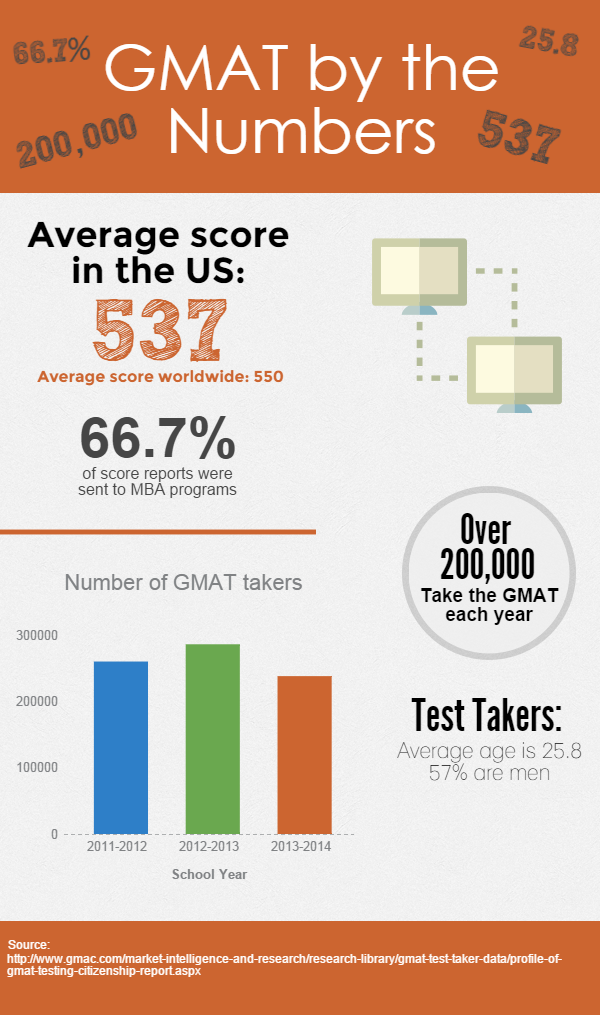 “
“
Over 200,000 people take the GMAT every year worldwide. For the most part, around 260,000 people have taken the GMAT each year for the last five years. In the 2011-2012 school year, that number skyrocketed to around 286,000 people. However, the next year, that number then dropped to 238,000. This may be because the test changed in 2012, removing the second essay and adding in an integrated reasoning section.
So, who are these test takers and why do they do it? According to GMAC data, men still make up the majority of test-takers at around 57 percent. The average age of GMAT test takers was 25.8, which is slightly younger than the average age in 2010, which was 26.5.
People take the GMAT for a variety of different reasons. Of the reports sent in 2014, 66.7 percent were sent to MBA programs, including both in person and online MBA programs. Just over 30 percent were sent to master’s programs that were not MBA programs. Finally, 3.1 percent were sent to doctoral or other programs.
According to GMAC data, average GMAT scores vary from country to country. Worldwide, the average GMAT score was 550 for 2014. The average score in the United States was actually below the worldwide average that year, at 537. Australia and the Pacific Islands, Canada and Asia all had average GMAT scores above the worldwide average.
So, what does this mean for future test takers? For the most part, this all depends on a student’s goals. In general, students should try to be above average for their demographic, to give themselves a greater competitive edge. This will most often require a good study plan and an investment of both time and money. A good GMAT score can open many doors, including financial aid such as scholarships, so it is a valuable investment.